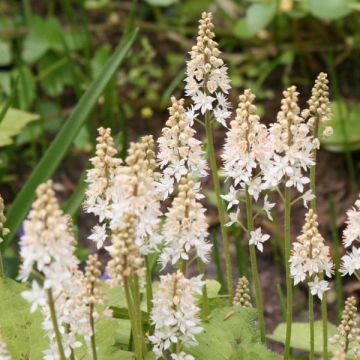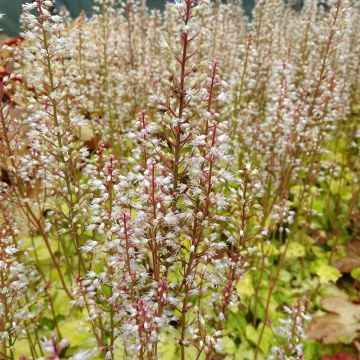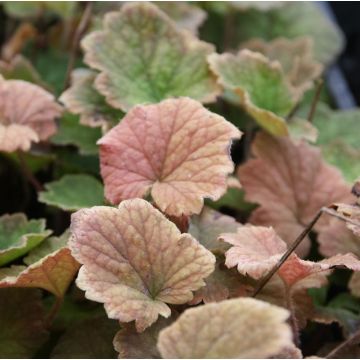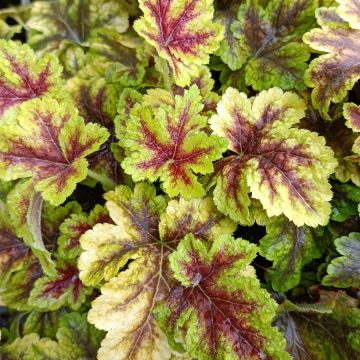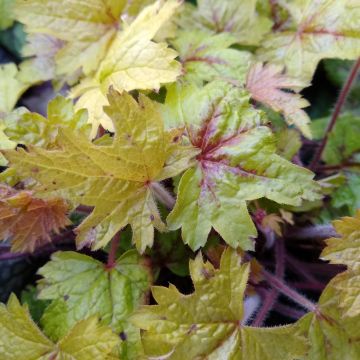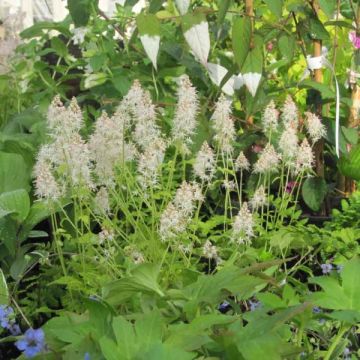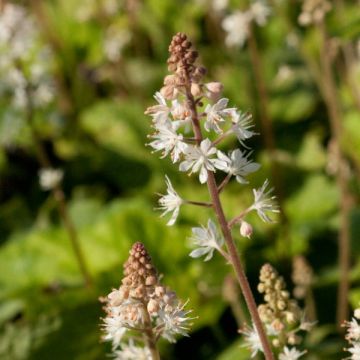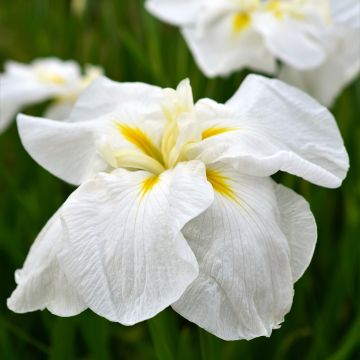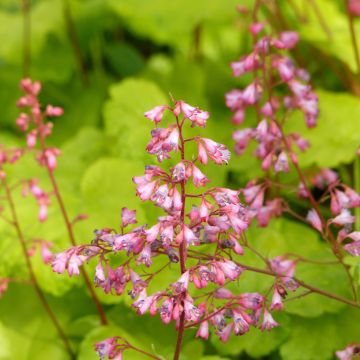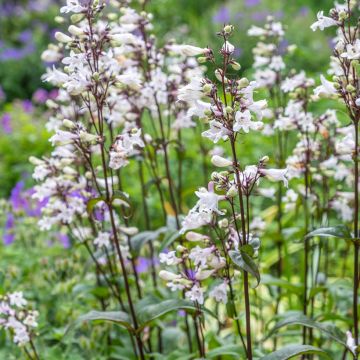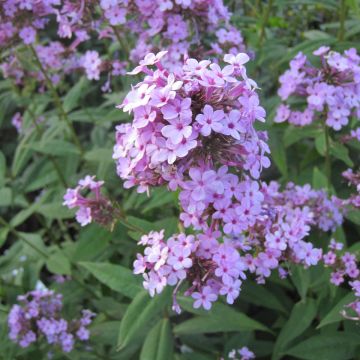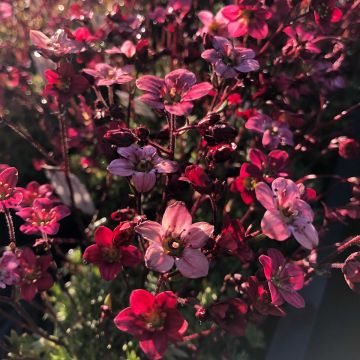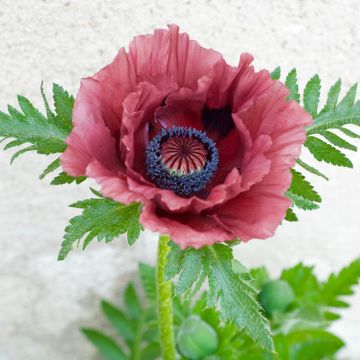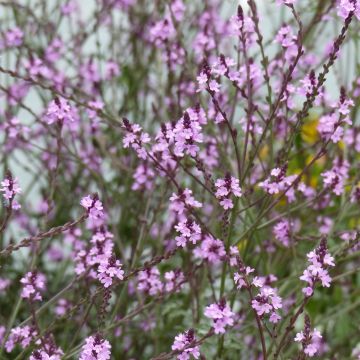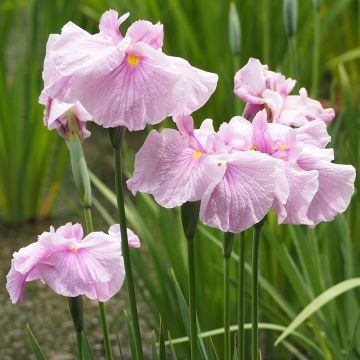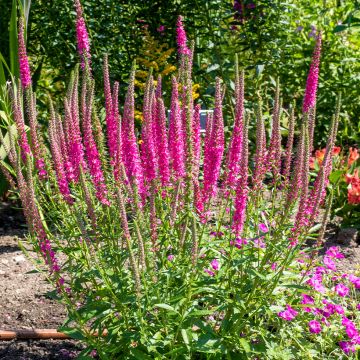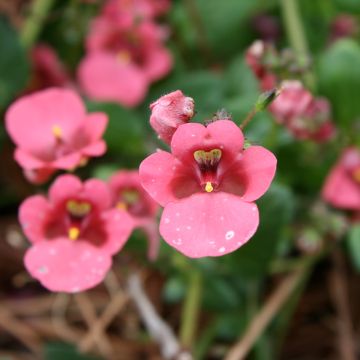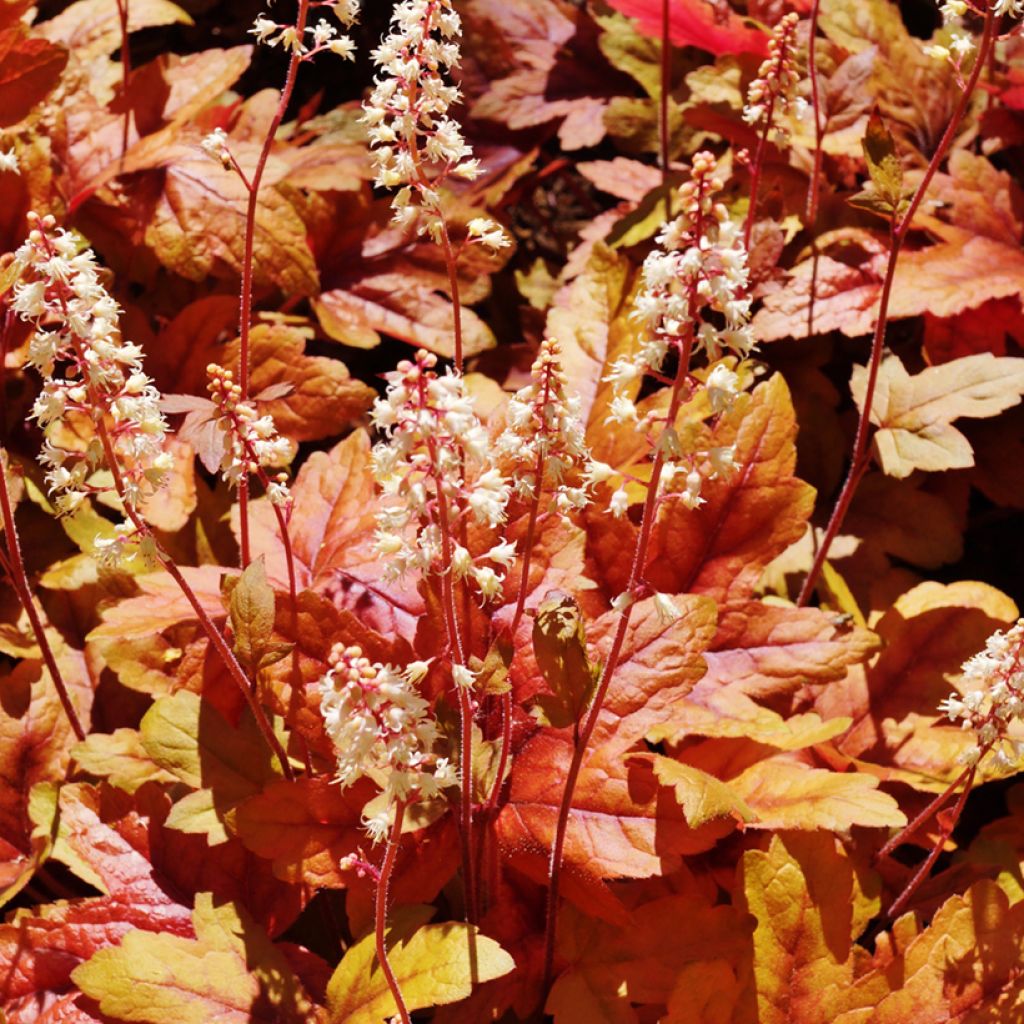

Heucherella Brass Lantern
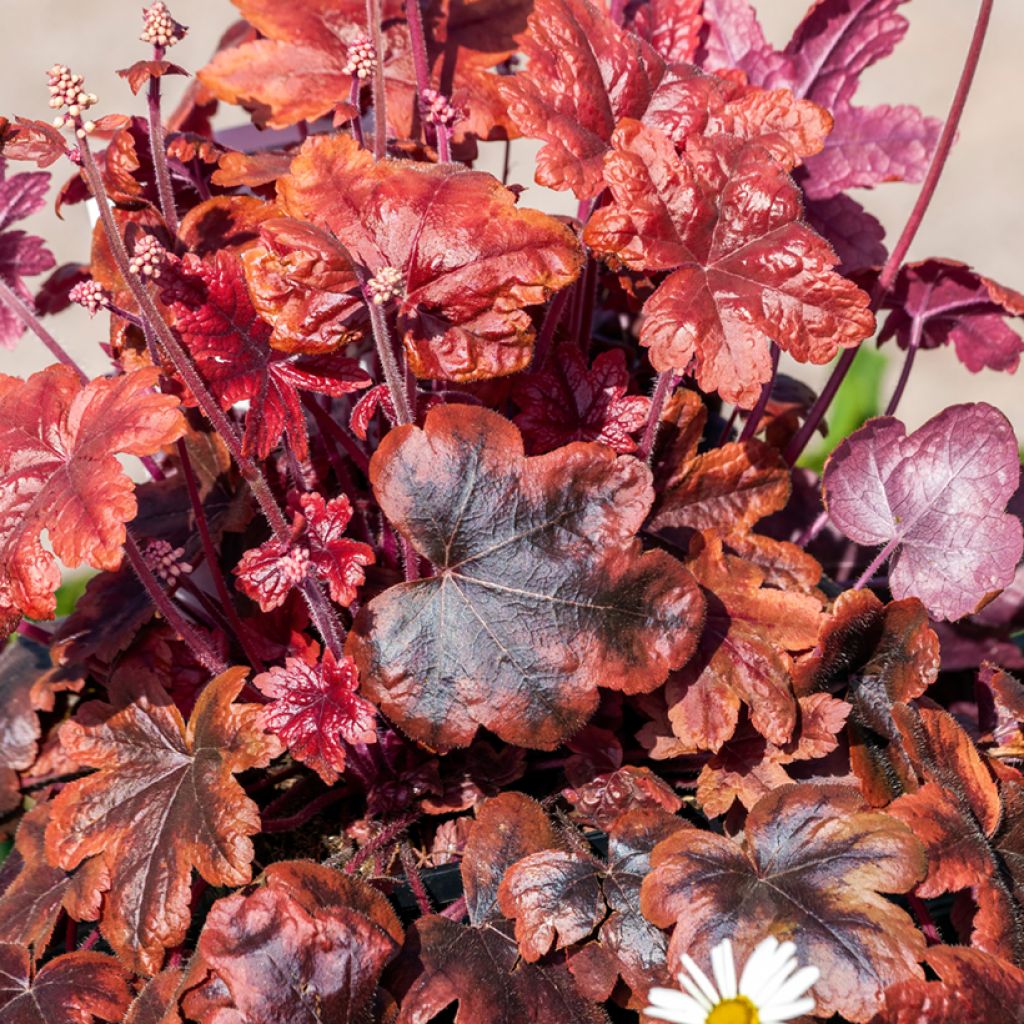

Heucherella Brass Lantern
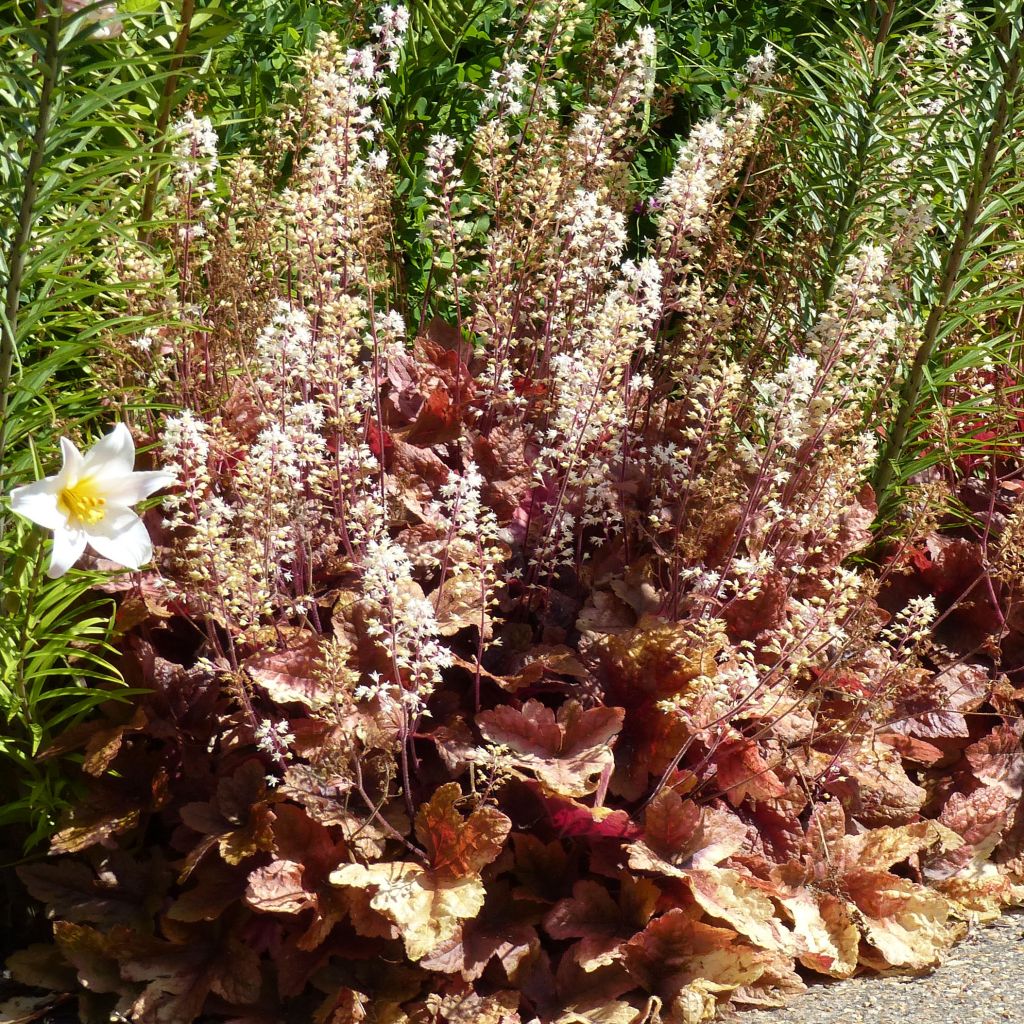

Heucherella Brass Lantern
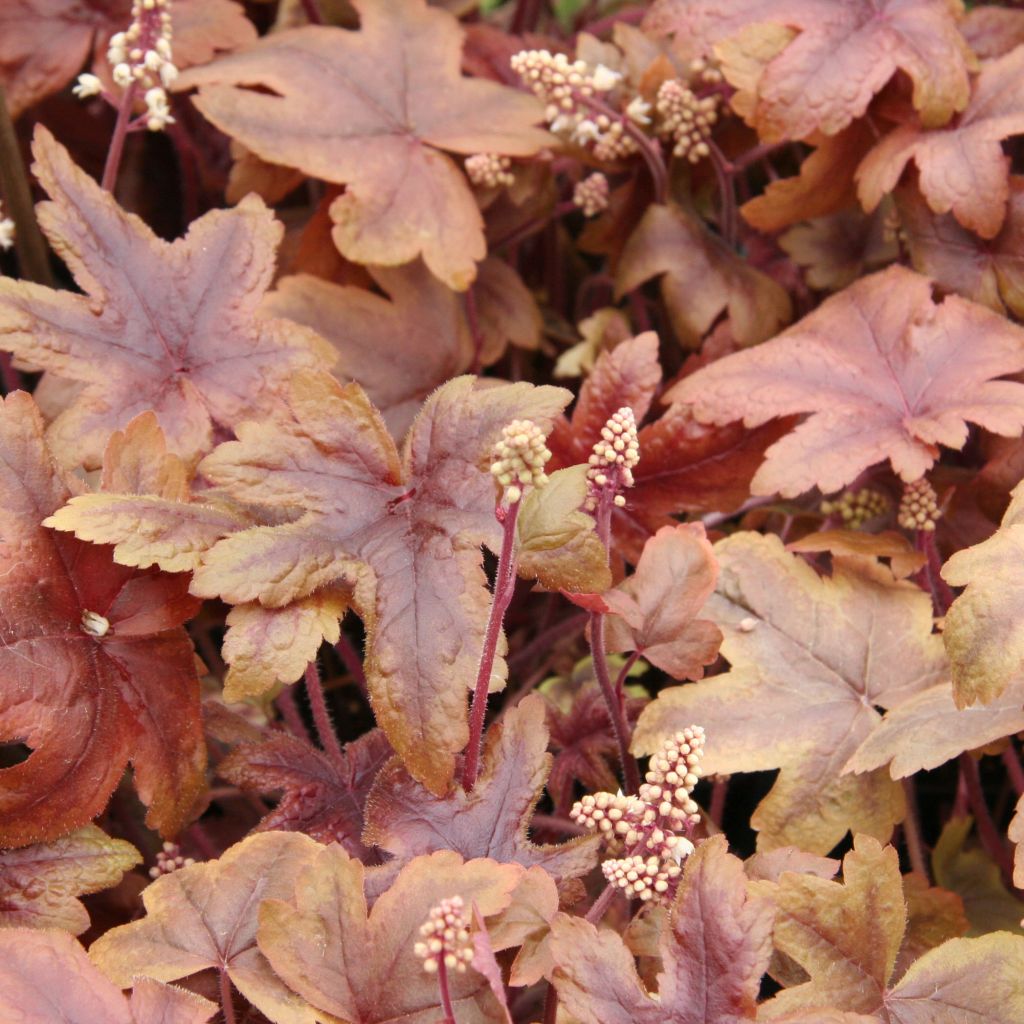

Heucherella Brass Lantern
Heucherella Brass Lantern
(x) Heucherella Brass Lantern®
Foamy Bells
This item cannot be shipped to the selected country
Delivery charge from €5.90
More information
Schedule delivery date,
and select date in basket
This plant carries a 12 months recovery warranty
More information
We guarantee the quality of our plants for a full growing cycle, and will replace at our expense any plant that fails to recover under normal climatic and planting conditions.
From €5.90 for pickup delivery and €6.90 for home delivery
Express home delivery from €8.90.

Does this plant fit my garden?
Set up your Plantfit profile →
Description
The Heucherella 'Brass Lantern' is a hardy evergreen perennial with colourful foliage blending olive green and purple orange for a warm and bright effect. From June to August, pretty small white bell-shaped flowers emerge from its magnificent foliage. It is a recent creation of great ornamental interest.
The Heucherella is one of those plants that prove that the horticulturist, by playing matchmaker, can create arranged marriages that are nonetheless very successful. Indeed, the Heucherella 'Brass Lantern' is the result of hybridization between two well-known saxifrageaceae: the Heuchera and the Foamflower.
'Brass Lantern' is a very interesting cultivar that offers evergreen foliage (except in regions with harsh winters) composed of small lobed leaves whose colour evolves throughout the seasons: chocolate brown and olive green in winter, it brightens up with copper and gold in spring. From June to August, it is adorned with charming small white bell-shaped flowers that emerge from the foliage, carried by dark stems. It has a spreading habit and reaches a height of 35 cm (14in) and a width of 40 cm (16in) at maturity.
From its parents, the Heucherella has retained a clear preference for partial shade and the freshness of humus-rich soil, as well as perfect hardiness, at least down to -15°C, and a strong vigour. Its maintenance is limited and consists of removing faded flowers and withered leaves as they appear. This makes this little wonder a rather easy-to-grow plant as long as you respect its essential needs.
In the garden, it will easily find its place in a partial shade bed, in colourful woodland settings, or at the base of trees in a family association with Heuchera and Foamflower but also with Ferns or the magnificent Cuscutiformis Saxifrage.
Report an error about the product description
Heucherella Brass Lantern in pictures
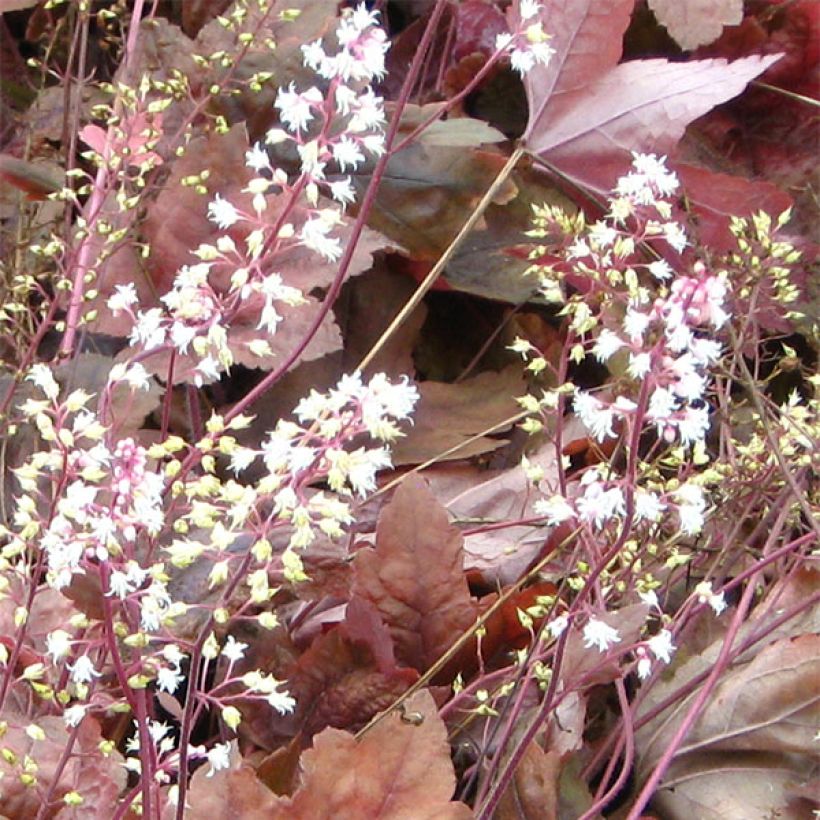

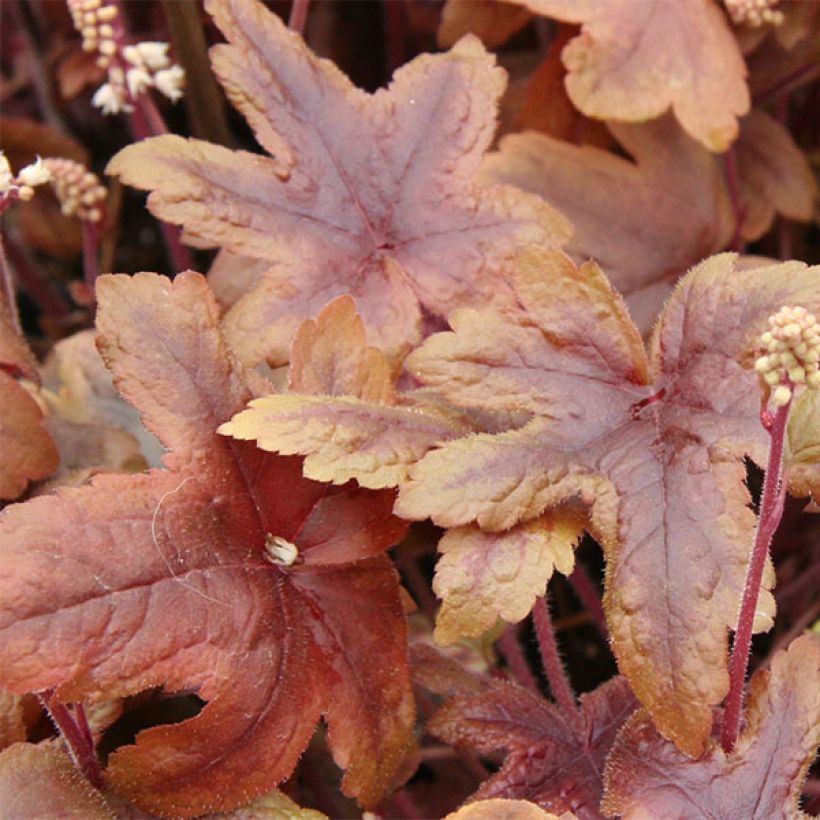

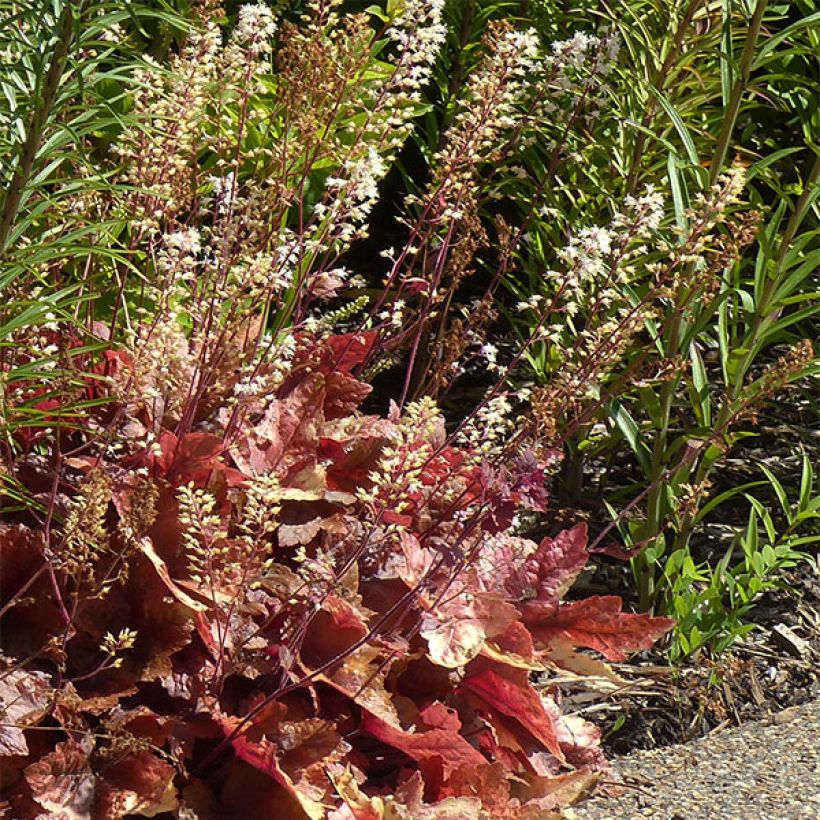

Flowering
Foliage
Plant habit
Botanical data
(x) Heucherella
Brass Lantern®
Saxifragaceae
Foamy Bells
Cultivar or hybrid
Other Tiarellas and Heucherellas
Planting and care
Easy to maintain, the Heucherella thrives in all types of moist to wet, well-drained, neutral to acidic soils. It can be planted in semi-shade or dense shade (although the foliage colour may be less vibrant). It must be protected from full sun. It should be planted in loose soil that retains moisture, with the option of adding mulch. It does not tolerate very hot conditions and prefers high humidity. Once established, this perennial seems to tolerate dry shade under trees and bushes. It requires little maintenance and pruning is not necessary except in the case of damaged foliage or for rejuvenating the plant.
Planting period
Intended location
Care
-
, onOrder confirmed
Reply from on Promesse de fleurs
Summer flowering perennials
Haven't found what you were looking for?
Hardiness is the lowest winter temperature a plant can endure without suffering serious damage or even dying. However, hardiness is affected by location (a sheltered area, such as a patio), protection (winter cover) and soil type (hardiness is improved by well-drained soil).

Photo Sharing Terms & Conditions
In order to encourage gardeners to interact and share their experiences, Promesse de fleurs offers various media enabling content to be uploaded onto its Site - in particular via the ‘Photo sharing’ module.
The User agrees to refrain from:
- Posting any content that is illegal, prejudicial, insulting, racist, inciteful to hatred, revisionist, contrary to public decency, that infringes on privacy or on the privacy rights of third parties, in particular the publicity rights of persons and goods, intellectual property rights, or the right to privacy.
- Submitting content on behalf of a third party;
- Impersonate the identity of a third party and/or publish any personal information about a third party;
In general, the User undertakes to refrain from any unethical behaviour.
All Content (in particular text, comments, files, images, photos, videos, creative works, etc.), which may be subject to property or intellectual property rights, image or other private rights, shall remain the property of the User, subject to the limited rights granted by the terms of the licence granted by Promesse de fleurs as stated below. Users are at liberty to publish or not to publish such Content on the Site, notably via the ‘Photo Sharing’ facility, and accept that this Content shall be made public and freely accessible, notably on the Internet.
Users further acknowledge, undertake to have ,and guarantee that they hold all necessary rights and permissions to publish such material on the Site, in particular with regard to the legislation in force pertaining to any privacy, property, intellectual property, image, or contractual rights, or rights of any other nature. By publishing such Content on the Site, Users acknowledge accepting full liability as publishers of the Content within the meaning of the law, and grant Promesse de fleurs, free of charge, an inclusive, worldwide licence for the said Content for the entire duration of its publication, including all reproduction, representation, up/downloading, displaying, performing, transmission, and storage rights.
Users also grant permission for their name to be linked to the Content and accept that this link may not always be made available.
By engaging in posting material, Users consent to their Content becoming automatically accessible on the Internet, in particular on other sites and/or blogs and/or web pages of the Promesse de fleurs site, including in particular social pages and the Promesse de fleurs catalogue.
Users may secure the removal of entrusted content free of charge by issuing a simple request via our contact form.
The flowering period indicated on our website applies to countries and regions located in USDA zone 8 (France, the United Kingdom, Ireland, the Netherlands, etc.)
It will vary according to where you live:
- In zones 9 to 10 (Italy, Spain, Greece, etc.), flowering will occur about 2 to 4 weeks earlier.
- In zones 6 to 7 (Germany, Poland, Slovenia, and lower mountainous regions), flowering will be delayed by 2 to 3 weeks.
- In zone 5 (Central Europe, Scandinavia), blooming will be delayed by 3 to 5 weeks.
In temperate climates, pruning of spring-flowering shrubs (forsythia, spireas, etc.) should be done just after flowering.
Pruning of summer-flowering shrubs (Indian Lilac, Perovskia, etc.) can be done in winter or spring.
In cold regions as well as with frost-sensitive plants, avoid pruning too early when severe frosts may still occur.
The planting period indicated on our website applies to countries and regions located in USDA zone 8 (France, United Kingdom, Ireland, Netherlands).
It will vary according to where you live:
- In Mediterranean zones (Marseille, Madrid, Milan, etc.), autumn and winter are the best planting periods.
- In continental zones (Strasbourg, Munich, Vienna, etc.), delay planting by 2 to 3 weeks in spring and bring it forward by 2 to 4 weeks in autumn.
- In mountainous regions (the Alps, Pyrenees, Carpathians, etc.), it is best to plant in late spring (May-June) or late summer (August-September).
The harvesting period indicated on our website applies to countries and regions in USDA zone 8 (France, England, Ireland, the Netherlands).
In colder areas (Scandinavia, Poland, Austria...) fruit and vegetable harvests are likely to be delayed by 3-4 weeks.
In warmer areas (Italy, Spain, Greece, etc.), harvesting will probably take place earlier, depending on weather conditions.
The sowing periods indicated on our website apply to countries and regions within USDA Zone 8 (France, UK, Ireland, Netherlands).
In colder areas (Scandinavia, Poland, Austria...), delay any outdoor sowing by 3-4 weeks, or sow under glass.
In warmer climes (Italy, Spain, Greece, etc.), bring outdoor sowing forward by a few weeks.


































